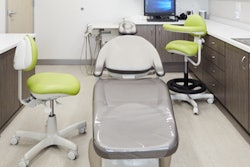
You've probably heard about an ergonomic intervention for dentists and hygienists, such as a new curette or workstation modifications, and wondered if there really was any evidence that the intervention was effective. Researchers had the same question and conducted a review to find out.
The results of the review are not encouraging, as the researchers found few quality studies on ergonomic interventions, and these studies did not allow them to draw definitive conclusions one way or another.
"We need better studies to evaluate the effectiveness of ergonomic interventions in dental care practitioners," the authors wrote (Cochrane Database of Systematic Reviews, October 15, 2018).
“We need better studies to evaluate the effectiveness of ergonomic interventions in dental care practitioners.”
The review was led by Priti Mulimani, MDS, of the Melaka-Manipal Medical College Faculty of Dentistry in Melaka, Malaysia. Faculty at the University of Washington School of Dentistry in Seattle also participated in the research.
The researchers wanted to assess the effect of ergonomic interventions for preventing work-related musculoskeletal disorders among oral healthcare practitioners. They conducted a literature search of databases for randomized control trials and found more than 940 relevant studies. That number was reduced to 20, from which 16 of those studies were excluded and two were yet to be classified. This left two studies for review.
One of the studies evaluated a multifaceted ergonomic intervention, and the other studied the effectiveness of two different types of curettes used for scaling in preventing work-related musculoskeletal disorders.
The first study included interventions such as being trained about ergonomics, ergonomic workstation modification and training, and a regular exercise program. The review authors reported that there is very low-quality evidence that a multifaceted intervention has no clear effect on dentists' risk of these musculoskeletal disorders in the thighs (95% confidence interval [CI]: 0.23-1.42) or feet (95% CI: 0.29-1.41) when compared with no intervention over a six-month period.
The second study involved participants using lightweight curettes with wider handles or heavier curettes with narrow handles for scaling over a 16-week period. The review authors found that there is only low-quality evidence of no clear difference in elbow or shoulder pain.
The authors noted that they were unable to combine the results from the two studies because of the diversity of interventions and outcomes.
The lack of suitable studies meant the researchers could not draw definitive conclusions about the benefit, or lack thereof, of ergonomic interventions, they concluded.
"This review highlights the need for well-designed, conducted, and reported [randomized controlled trials], with long-term follow-up that assess prevention strategies for [work-related musculoskeletal disorders] among dental care practitioners," the authors wrote.



















